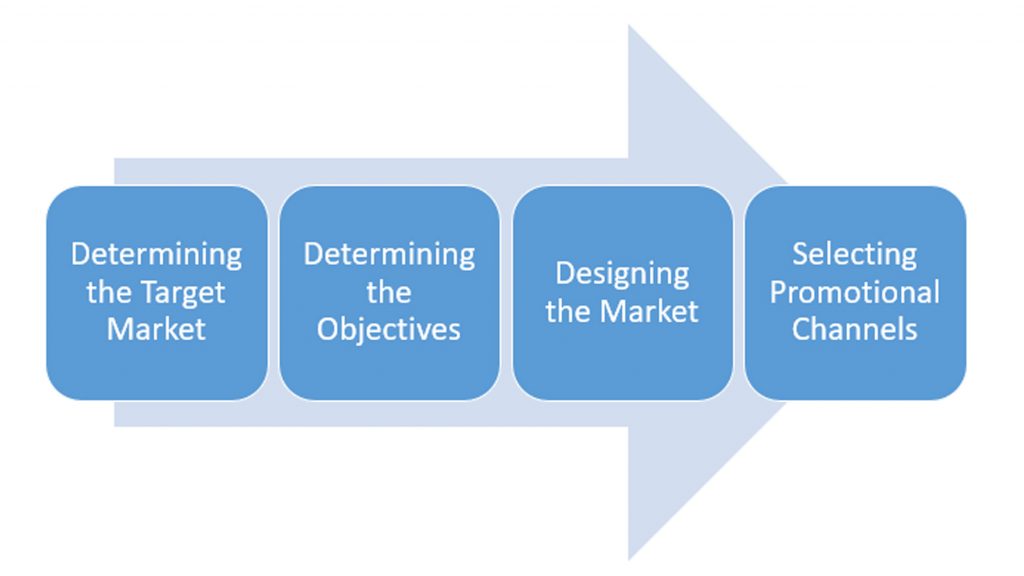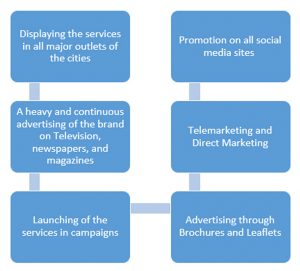
Critical Evaluation of the Business Ethics of British Petroleum based on two Contrasting Theoretical Approaches
March 8, 2022
Examining the Impact of Dual-Tasking on Gait of Health Individuals
March 14, 2022HND in Business and Marketing Strategy: Navigate competitive landscapes with strategic insights. Develop skills in marketing planning for holistic business success. Embarking in the dynamic realms of business and marketing requires more than a casual foray; it demands a strategic mindset and a comprehensive understanding of contemporary methodologies. The complexities of today's business landscape necessitate individuals to possess a nuanced approach to problem-solving, adept decision-making skills, and a keen awareness of market trends. In response to this need, a Higher National Diploma (HND) in Business and Marketing Strategy emerges as a vital conduit for aspiring professionals to hone their strategic acumen.
Explore Marketing Dissertation Topics
The HND program is a gateway to unlocking these essential skills, providing a structured curriculum that delves into the intricacies of business strategy and marketing dynamics. As a comprehensive educational pathway, it equips individuals with the knowledge and practical insights needed to navigate the ever-evolving landscape of the business world. By fostering a deep understanding of strategic planning, digital marketing, market research, and brand management, the HND in Business and Marketing Strategy empowers graduates to contribute meaningfully to the success of organizations and excel in a competitive business environment.
Executive Summary
Swiss Ski Arena is dedicated to delivering an unparalleled skiing experience, striving to fulfil the desires of its customers. The company aims to provide the skiing industry with top-notch service and state-of-the-art facilities. The Swiss Ski Arena ensures optimal snowy conditions, well-designed terrain, and exceptional customer service. Central to its success is a focus on superior management services.
Recognizing the pivotal role of effective management in business growth, the company emphasizes its significance, particularly in the dynamic skiing field. With a surge in consumer interest in physical challenges, the skiing industry is experiencing a corresponding upswing. Swiss Ski Arena aims to capitalize on this trend by offering customers the ultimate and enduring skiing experience. The cornerstone of the business's expansion lies in its commitment to outstanding customer care and innovative marketing strategies.
Swiss Ski Arena's inaugural financial year targets a gross revenue of 100,000 units. Acknowledging the pivotal role of marketing in business development, the company plans to allocate 15% of this revenue to robust marketing strategies. Additionally, Swiss Ski Arena is set to elevate customer experiences through offerings such as snowcat skiing and personalized, culturally representative cabin decorations. Looking ahead to the second year of operation, the company envisions expanding its terrain range to enhance its offerings further and meet the evolving needs of its clientele.
Introduction
Swiss Ski Arena is set to carve its niche in the thriving recreational industry, tapping into the escalating consumer spending, engagement, and diversification trends witnessed in recent decades. In recreational pursuits, connecting with nature is paramount, and skiing emerges as a peerless adventure for enthusiasts seeking this communion with the natural environment (Ballotta and Pouliasis, 2020). Noteworthy developments in the industry include substantial investments in cat skiing, helicopter skiing, and a general uptick in traditional skiing activities (Wang, 2017).
At the core of Swiss Ski Arena's business strategy is an unwavering commitment to providing customers with an unparalleled skiing adventure, complemented by exceptional customer care. The skiing arena will feature meticulously crafted skiing tracks, state-of-the-art snow lifts, nationally acclaimed instructors, an internationally recognized resort, and a dedicated playing area (Lindroos, 2017). To enhance the overall experience, the company plans to host diverse musical and sporting competitions, ensuring entertainment and fostering healthy competition to bolster motivation.
Key to the company's approach is a thorough analysis of its strengths and weaknesses, serving as a foundation for tailored marketing strategies (Wang, 2017). These strategies may encompass a spectrum of approaches, including advertisements, direct marketing initiatives, sales promotions, and more, ensuring a comprehensive and effective outreach to its target audience.
IMC Situational Analysis
Integrated Marketing Communication (IMC) Situational Analysis examines the current market conditions, competitor landscape, and relevant external factors. It is the foundational step in developing effective communication strategies by identifying opportunities and challenges within the marketing environment. By assessing consumer behaviour, industry trends, and communication channels, businesses can strategically position their messages for maximum impact and resonance.
-
SWOT Analysis
Undertaking a SWOT analysis constitutes a foundational stage in shaping the overarching marketing strategy (Hollensen, 2019). The SWOT analysis for Swiss Ski Arena entails thoroughly examining its strengths, weaknesses, opportunities, and threats, providing essential insights to inform and refine the overall marketing approach.

Figure 2: SWOT Analysis
|
STRENGTHS |
WEAKNESSES |
|
• No restriction of any age group • Diverse market due to a part of both the recreational and sports industry • Increase popularity in the younger generation • Can be used for training programs • Internationally recognised sport so it can be used as a luring spot for foreign tourists. • Since the Arena will be open all year, revenue generation opportunities throughout the calendar • Sledging facility for toddlers and children. • High first-time customer ratio due to free lessons |
• Customer’s expectations regarding lessons and training programs • For some customers, it might be a one-time activity, so it is difficult to make permanent customers • Maintaining consistency in the quality of snow regularly • Limited use of modern technology • One or two staff members can ruin the whole brand image as they are the front face of the Skiing arena • No brand recognition except outside skiing enthusiast community |
|
OPPORTUNITIES |
THREATS |
|
• Growing interest for people who cannot visit snowy places and mountains • Skiing resorts can be advertised as a good place for socialising • Different competitions can be arranged to attract customers • Screening events for different sports can also be held • Association with an established sports team can increase the revenue • Establishing a skiing academy can give rise to the next skiing superstar who can be the ultimate brand ambassador. • The arena can retain its customers through timely deliveries. |
• Lack of individualised attention for both country skiing and sports ski • New competitors in the market • Not coping with the technology • Strict safety rules and international codes • High Dropout rate of training students • High training prices can cause low interest from middle-class families
|
-
Porter’s Five Forces
Michael Porter underscored that, beyond the actions of competitors, various factors contribute to shaping a competitive environment (Batra, 2016). These factors, collectively known as Porter's Five Forces, encompass five key elements that play a pivotal role in influencing an industry's competitiveness.

Competitive Rivalry
This involves an examination of the competitors' identity and the quality of their services relative to the company's offerings (Batra, 2016). Swiss Ski Arena contends with formidable rivals such as Midland Ski Club, Ackers Adventures, and Telford Snowboard and Ski Centre in the Solihull region. As a newcomer, Swiss Ski Arena anticipates heightened competition from established arenas, with the challenge of attracting customers who may already be loyal to other ski facilities, thereby impeding initial growth.
Suppliers’ Power
This factor gauges the degree of control suppliers have over pricing. Primary suppliers for a skiing arena include snow, skating and skiing equipment, and items for the accompanying resort. Given that Swiss Ski Arena constitutes a relatively small portion of the supplier's total sales and lacks alternative suppliers, it is confronted with elevated supplier bargaining power.
Buyers’ Power
This aspect assesses the customer base size, revenue generated, cost efficiency relevance, and the ease with which customers can switch from the company (Batra, 2016). With a smaller customer base in the initial stages of the business, customers hold a stronger negotiating position, potentially necessitating price adjustments by Swiss Ski Arena to meet their demands. Buyer power decreases as the business establishes itself and expands its customer base. However, during the initial phase, Swiss Ski Arena may need to offer competitive pricing to attract customers from other businesses, effectively leveraging a higher switch margin to mitigate buyer power.
Threat of Substitution
This pertains to the probability or ease of substitution. It assesses the extent to which a buyer or customer can readily replace the company (Batra, 2016). In the case of customers utilizing the skiing arena for sports, they may consider alternatives but might not entirely replace it. On the other hand, for customers viewing the skiing arena primarily as an entertainment venue, there is a higher likelihood of finding a more appealing and cost-effective entertainment source, leading to potential substitution of the company.
Threats of New Entry
The potential for new market entry evaluates the ease with which a new competitor can enter a specific market or conduct business in that market (Batra, 2016). Establishing a new ski arena demands substantial investments, a large area, and the presence of skilled professional instructors and management teams. Consequently, the barriers to entry are high, making it challenging for new competitors to enter the ski arena market easily.
-
SOSTAC Analysis
SOSTAC is a commonly employed strategy in crafting frameworks for business models and their marketing strategies (FIDM, 2014). The acronym SOSTAC represents:

Figure 4: SOSTAC Analysis
Situation Analysis
It assesses the current stage of progression. The company initially established its business in the Skiing Arena business model context.
Objectives
The objectives of a business define its ultimate aim (FIDM, 2014). Swiss Ski Resorts aspires to become the region's premier and highest-rated ski arena, aiming to foster an international star's development through its training program.
Strategy
The approach to realizing these objectives encompasses providing top-tier facilities, such as maintaining a consistent supply of 12,500 tons of snow year-round, offering a dedicated sledging facility for children, and providing three small snowboarding slopes (Hanzer and Strasser, 2014). The accompanying resort is also committed to delivering exceptional entertainment and food facilities to enhance the overall experience for customers.
Tactics
Comprehensive lesson sessions will be available for beginners, complemented by coaching classes designed for deserving students, as integral components of public relations strategies (Hanzer and Strasser, 2014).
Actions
Successful implementation of these strategies necessitates a highly skilled coaching staff and meticulous attention to customer service. Additionally, marketing strategies and budget allocation should be thoughtfully considered within the promotional mix (FIDM, 2014).
Control
To manage and improve customer engagement, the arena will undergo annual updates, reviews, and modifications to stay competitive. The business model is designed to be self-sustaining, with any additional modifications funded through the revenue generated from the arena (Hanzer and Strasser, 2014).
Marketing Channels in Swiss Ski Resort
Swiss Ski Resort employs various marketing channels to reach its target audience, including online platforms, social media, and partnerships with travel agencies. By leveraging a multi-channel approach, the resort ensures a widespread and effective reach, enhancing its visibility and attracting diverse segments of skiing enthusiasts and vacationers. Digital marketing plays a pivotal role in this strategy, enabling the resort to engage with potential visitors through targeted advertisements, personalized content, and interactive campaigns.
Impact of Digital Marketing in Generating a High Customer Base of Online Retailers
Content Marketing
The Swiss ski resort uses this as a method of advertising its services. According to Cristobal-Fransi et al. (2017), a Swiss ski resort has a website that uses content as a marketing source for the resort. This content provides a view of the resort experience to the customers and the upcoming promotional events and offers. These channels provide the opportunity to improve the awareness of the resort services among the customers and provide a level of recognition. This also helps the resort develop trust and loyalty amongst its customers by positioning it at the expert position in the industry and building a sense of authority among its competitors.
Social Media Marketing
Like other businesses in the industry, the Swiss ski resort has been using this marketing channel for quite a while now. The business uses the images of the resort and their customer’s feedback on social media platforms for promotional purposes. The platforms are also used to share the event details of the resort plans to attract customers. In addition to this, the resort also uses the platforms to provide customer support and answer their queries. This marketing strategy helps seasonal businesses such as ski resorts to increase the number of customers who visit their website by improving the ranking of the resort on search engines while saving the marketing budget as it is a cost-effective method that requires minimal financial efforts of the company.
Video Marketing
Informational videos are essential for developing a relationship between the resort and its customers (Luque Martínez, Doña Toledo and Faraoni, 2019). It also portrays the company’s image as a customer-caring organisation; the Swiss ski resort has been using this marketing to provide the dos and don’ts of the skiing process and share the environmental and sustainable aspects of the resort’s procedures. The resort also uses videos regarding upcoming events, discounts and offers to the customers. The videos used by the resort increased the number of visitors to its landing page as these videos raised the customers' curiosity and enhanced their enthusiasm towards the sport. The videos produced by the resort aid the resort's customers in their decision-making process and enhance the chances of the video being shared by the customers.
Email Marketing
According to Levesque and Boeck (2017), customised emails have been a significant method for making customers feel that the company is dedicated to the customers on a personal level. The resort has been using email marketing to send customised emails to customers, sharing promotional details and discount offers. In addition to this, the method is also being used to introduce training and education programs for customers interested in learning skiing. The resort's marketing method helps the business reach customers globally and expand on new grounds. It is a measurable method of marketing that helps the resort form statistical information about the effectiveness of the marketing method that it uses.
Value-Added Through Marketing Channels
Swiss Ski Resort uses marketing channels such as content, social media, email, and video marketing to increase the number of customers they attract. According to Skarmeas, Zeriti and Baltas (2016), marketing channels add value for the company and fill the gap between its customers. The content marketing used by the resort has added value to its sales by increasing the number of customers who visit its website, inspiring them to associate with the resort, and increasing their trust.
Social media marketing increases the customers' preference towards the resort due to the resort’s use of social media platforms such as Facebook for the time feedback to the customers and the provision of the customers’ experience regarding the resort. Video marketing increases customer loyalty to the resort due to the video content, including the dos and don’ts of skiing. Email marketing adds value to the resort's business by increasing the number of customers.
Target Market
The company's target market is mainly skiers and snowboarders. However, it also wants to target travel vloggers and social media influencers so they can also act as its free promotional sources (Polijic and Kosutic, 2018).
Communication Objectives
- To get a 2% rise in sales by promoting participation by advertising snow sports within the first 6 months
- Improve public relations by participating in environmental and sustainability initiatives using a public relations promotional strategy within 3 months.
- To ensure the customers' safety by initiating training and education programs using direct marketing techniques from the start of the marketing campaign.
- To increase customer participation in ski sports by 5% by using personal selling techniques in the first 2 months
Marketing Channels Serving Communication Objective
According to Armstrong et al. (2018), organisations' marketing channels aim to attract customers to the business. Cristobal-Fransi et al. (2017) agreed that these channels also have a significant purpose: meeting the communicative objectives. These marketing channels are selected to develop a sense of customer interest towards a brand’s products and services, persuading the customers that they need the organisation's service (Hajli et al., 2017).
The Swiss ski resort has a website which it uses for its content marketing procedure and advertising the services of the resort. The website of the resort sharing content such as the do’s and don’ts informational video regarding upcoming events and offers has helped the customer create a 2% rise in the sales of the Ski resort due to the promotional participation of the new customers within the six months. The video marketing technique used by the resort helped the organisation develop relations with the customers collectively within 3 months of the start of promotional activities. The resort successfully developed a relationship with its customers by sharing tutorial videos with its customers. The email marketing technique has helped the resort develop interpersonal relations with the customers through sending emails, including the names of the customers and the training program customised for them according to the information they provided to the resort. The resort uses social media as a method of interaction with the customers through customised training sessions and raising customer participation by 5% in the first 2 months using customised personal training.
Budget
This report will market the Swiss Ski Arena through social media, email marketing, branding, and video marketing. It will allocate a rough budget of 50% of the total gross revenue. It will assume that the yearly gross revenue of the Swiss Ski Arena is 100,000, which means that 50% of the marketing budget will be around 50,000. The Swiss ski budget for the marketing campaign would be:

Strategic Communication Plan
The strategic communication plan of a company includes creating its marketing plan and allocating a specific budget for it (Camilleri, 2017). The company will carry out its communication plan in the following phases:
Promotional/Marketing Mix
Establishing the promotional/marketing mix of a company involves

In addition, the price of the products that will be the ski gadgets rented from the resort will be decided based on the prices of the competing businesses; as it’s a service-based business, the products through which the business will make sales would be the hotel rooms that it would rent out to people and the ski gadgets. The resort would target people interested in skiing and other snow sports. Swiss ski resorts would also provide different high-quality gadgets for the customers in-house. The promotional mix of the resort would consist of activities like:
Determining the Target Market
The company's target market is mainly skiers and snowboarders. However, it also wants to target travel vloggers and social media influencers so they can also act as its free promotional sources (Polijic and Kosutic, 2018).
Determining the Objectives
The company's main business objective is to increase its revenue by encouraging the customers by delivering the message (Polijic and Kosutic, 2018).
Designing the Message
The promotional message for the brand is "Discover and explore your home in the snow" (Polijic and Kosutic, 2018). This promotional message will give the customers a feeling of their own.
Selecting Promotional Channels
The promotional channels the company will use for its brand include site marketing, content marketing, social media marketing, video marketing, and email marketing (Polijic and Kosutic, 2018).
Advertising
Advertisements can be carried out using different modes to buy the time and space to promote a specific message (Camilleri, 2017). For instant feedback, the company will conduct internet surveys and online promotions. However, the company’s general modes of advertisement will be newspapers, magazines, social media, Local Radio, and Billboards. It will be able to amplify its credibility and brand value. It will also be able to achieve its revenue goals much earlier than anticipated (Johnson, 2018).
Personal Selling
Personal selling involves brand enhancement through sales representatives (Jenkinson, 2007). Since the ski resort is an area-based business, it will plan to engage its customers in more activities at the site. These activities may include camping options, chair lifts, etc. It will help the company achieve diversity (Johnson, 2018).
Sales Promotion
Through sales promotions, one can give extra value to their customers and boost their revenue through competitions, coupons, special offers, samples, and premium facilities (Jenkinson, 2007). At the company’s ski arena, it plans to introduce special packages for its repeated and permanent customers while there will be a special discount for couples on rooms that accompany the ski arena. This will also motivate other customers, who may transform from potential customers to permanent customers.
Public Relations
Positive relations with the general public and direct stakeholders can promote the company's image and is also a form of unpaid media advertisement. Improving public relations means creating a positive image in the media and influencers' eyes (Laurie and Mortimer, 2019). The company plans to improve its public relations by offering special skiing training and accessories to underprivileged kids who cannot afford them. Improving public relations is also a more credible way of an advertisement than paid advertisements (Demiroglu, 2018).
Direct Marketing
Direct marketing involves an organisation's communication with its employees in a more personalised way (Laurie and Mortimer, 2019). The company plans to improve its relationship with customers through direct telephone, emailing and wishing them on special occasions. This strategy keeps the customers happy and cements their values and place in their hearts by affecting their emotions.
Explore Communication & Supportive Practices
Integrated marketing communication is a cost-effective, unified and multi-dimensional strategy that best utilises the marketing budget (Laurie and Mortimer, 2019). IMC focuses on brand identity for the creation of a singular message to focus on. Situational analysis is the backbone of any marketing plan (Laurie and Mortimer, 2019). There are many opportunities for Swiss Ski Arena to increase its target audience.
Justification for Selected Channels
The selection of online platforms and social media for marketing channels is justified by their extensive reach, allowing Swiss Ski Resort to connect with a broad audience of skiing enthusiasts and potential vacationers. Partnering with travel agencies is strategic for tapping into established networks, facilitating seamless access to travel-related audiences and enhancing the resort's visibility in the market.
-
Content Marketing
Content marketing has proven to be an effective way of advertising. Ski resorts like the Swiss Ski Arena have used content marketing for quite a while. The website presence of the Swiss ski arena makes it easier for the company to use the content as a marketing source for the company. By creating content suitable for attracting customers to snow sports, the Swiss ski resort has been trying to raise sales.
-
Social Media Marketing
Using social media marketing creates a link between the customer and the business. Swiss ski resorts have a website that is used for advertising their business. Many businesses use Facebook and Twitter feeds for marketing purposes which are a good way to link ski resorts with clients. Social media marketing has a significant impact on consumer buying behaviour, influencing their decision-making process through various tactics such as targeted advertising, influencer endorsements, and user-generated content.
-
Video Marketing
Creating videos motivating customers for snow sports and providing the dos and don’ts of snow sports helps create a positive image of the resort. This positive image is used to attract new customers to the resort. The Swiss ski arena creates promotional videos regarding the activities and other features of the resort, which helps attract clients. The strategies for gaining customer loyalty and business, like low price rates and discount offers, are also advertised using video marketing in Swiss ski resorts.
-
Email Marketing
Making the customers remember the advantages of snow sports and letting them know about the new offers have increased ski resort sales by up to 20%. The Swiss ski arena has used this technique to improve sales due to being new in business; this has been a quality approach for the resort and provided a foundation for gaining customers. The offers like promo codes and themed discounts sent to the customers through email marketing have built the company's image as one with value for money and have since been attracting customers.
-
Strategic Plan and Tactics for Each Channel Selection
Site marketing could be done by paying the web advertisers to publish the ads on social media web pages so it may access a large audience using a specific platform, for example, Twitter, Facebook, LinkedIn, etc. It can also be referred to as social media marketing. It could be given to web advertisers as, with the help of their expertise, the content could reach a larger audience. Content marketing could be done to increase interest by sharing blogs and articles that will promote the brand and stimulate people's interest in ski products. The published content could be shared in newspapers and young adult magazines to target their readers. (Baltes, 2015)).
Video marketing could be done by making videos encouraging people to use and informing them about the products. For this purpose, a channel on YouTube could be made to allow viewers to check out the Swiss ski arena's services. Potential customers could be contacted through emails and informed about the ski arena, and leads could be gained through marketing agencies for potential customers.
-
Evaluation of Communication Objectives about the Promotional Communications Mix
Swiss ski resort uses a promotional communications mix which includes newspapers, magazines, social media, Local Radio, and Billboards, engages the customers in on-site activities, provides discount offers to the skiers, and provides training to the customers to increase the number of to the resort and send personalised emails to the customers to attract them to the resort. Advertising mediums such as newspapers, magazines, social media, Local Radio, and Billboards help the resort reach customers of all ages and increase its sales by increasing the number of customers, inspiring them to associate with the resort and increasing their trust in the resort.
Personal selling increases the customers' preference towards the resort due to the resort’s use of sales representatives for interaction with customers. Sales promotions increase customer loyalty to the resort due to discount offers. Public relations, by offering special skiing training and accessories to underprivileged kids, portray the resort's image as a sustainable environment that improves customer relationships. The direct marketing of the resort helps train and educate skiers and snowboarders to increase the number of customers to the clients.
-
Implementation Mechanisms
The objective of increasing participation can be achieved by letting more people know about it, and it could be done by promoting using the proper channels like site marketing and social media marketing. Relationships will be developed with the public and the media when the company starts reaching out to them through content and videos which inform them and motivate them to visit the ski arena (Jarboe, 2011).

-
Control Mechanisms
A specific marketing department must control and manage website and social media marketing. They will be tasked to control and form content posted on the sites to reach customers. They will be assessed by the total views on the advertisement and the reviews the customers will leave behind (Law et al., 2011). The content creation team will check the published content that needs to be posted on sites and create more to inform and encourage the potential audience. The quality of the content will be evaluated by the viewers' response to the quality and the information of the created material (Alcala et al., 2019).
-
Evaluation Mechanisms
The company's main goal is to achieve the market objectives and evaluate the strategic tactics through brand loyalty and consumer satisfaction. Some activities will be implemented to evaluate the company's and services' overall performance and whether the tactics and strategies are effective. The evaluation mechanisms include structuring and maintaining data related to the services, market, pricing trends, and consumers (Ahmed and Brohi, 2016).
The promotion techniques would be evaluated through the relevant department of the Ski arena. It will be done by the objectives set for the company, as all objectives will be aimed to be achieved as soon as possible to make the ski resort more popular and successful. However, the online marketing strategy will be analysed using Google Analytics. In contrast, the marketing campaign's success would be evaluated based on the increase in sales after the door-to-door marketing.
-
Marketing Communications Plan
The Swiss ski resort has been working on increasing the number of customers in the highly seasonal and competitive industry. For this, the organisation has been using marketing channels such as video, content, social media and email marketing. These marketing channels have benefited the resort by adding value to the company, such as customer loyalty, brand preference, sales increase and business expansion. The resort focuses on skiers and snowboarders as the main focus when conducting promotional activities. The company aims to attain a 2% rise in sales by promoting participation by advertising snow sports within the first 6 months, improving public relations by participation in the environmental and sustainability initiatives using a public relations promotional strategy to achieve within 3 months, ensure the safety of the customers by initiating training and education programs by using direct marketing techniques from the start of the marketing campaign and to increase the customer participation in ski sports by 5% by using personal selling technique in first 2 months. For that, the resort uses advertising channels such as newspapers, magazines, social media, Local Radio, and Billboards, engages the customers' on-site activities, provides discount offers to the skiers, and provides training to the customers to increase the number of to the resort and send personalised emails to the customers to attract them to the resort.
Conclusion
In conclusion, the company exhibits significant potential and is poised to emerge as a prominent player in the industry, leveraging the Skiing Arena's high-quality standards. The utilization of a comprehensive promotional mix, encompassing email campaigns, videos, content creation, website promotion, social media and different innovative marketing strategies, will be overseen by dedicated departments. These initiatives aim to attract and engage a wider audience, encouraging them to experience the offerings of the Ski Arena.
Guaranteed AI-Free Work
Protect your degree from AI-Objectifying! Get 100% human generated research content!
References
Ahmed, R.R., 2016. „Strategic Marketing Plan of Nike “. ResearchGate, Indus Institute of Higher Education.
Alcala, J., Benke, A., Dodson, J.R., Fenchel, J., Jimenez, L., Kramer, M., Smith, A. and Vives, F., Zignal Labs Inc, 2019. System and method for quality assurance of media analysis. U.S. Patent Application 16/438,751.
Armstrong, G.M., Kotler, P., Harker, M. and Brennan, R., 2018. Marketing: an introduction. Pearson UK.
Ballotta, L., Fusai, G., Kyriakou, I., Papapostolou, N.C. and Pouliasis, P.K., 2020. Risk management of climate impact for tourism operators: An empirical analysis on ski resorts. Tourism Management, 77, p.104011.
Baltes, L.P., 2015. Content marketing is a fundamental tool of digital marketing. Bulletin of the Transilvania University of Brasov. Economic Sciences. Series V, 8(2), p.111.
Batra, R., 2016. Integrating Marketing Communications: New Findings, New Lessons, and New Ideas. Journal of Marketing, 80(6), pp. 122-145.
Camilleri, M., 2017. Integrated Marketing Communications. In: Travel Marketing, Tourism Economics and the Airline Product: An Introduction to Theory and Practice. 1 ed. s.l.:s.n.
Cristobal-Fransi, E., Daries-Ramon, N., Mariné-Roig, E. and Martin-Fuentes, E., 2017. Implementation of Web 2.0 in the snow tourism industry: analysis of ski resorts' online presence and e-commerce. Spanish Journal of Marketing-ESIC, 21(2), pp.117-130.
Cristobal-Fransi, E., Daries-Ramon, N., Mariné-Roig, E. and Martin-Fuentes, E., 2017. Implementation of Web 2.0 in the snow tourism industry: analysis of ski resorts' online presence and e-commerce. Spanish Journal of Marketing-ESIC, 21(2), pp.117-130.
Demiroglu, O.C., Dannevig, H. and Aall, C., 2018. Climate change acknowledgement and responses of summer (glacier) ski visitors in Norway. Scandinavian Journal of Hospitality and Tourism, 18(4), pp.419-438.
Evette, A., Peyras, L., François, H. and Gaucherand, S., 2011. Environmental risks and impacts of mountain reservoirs for artificial snow production in the context of climate change. Journal of Alpine Research| Revue de géographie alpine, (99-4).
FIDM, D. R., 2014. SOSTAC: The guide to the perfect digital marketing plan. Journal of Direct, Data and Digital Marketing Practice, Volume 16, pp. 146-147
Hajli, N., Shanmugam, M., Papagiannidis, S., Zahay, D. and Richard, M.O., 2017. Branding co-creation with members of online brand communities. Journal of Business Research, 70, pp.136-144.
Hanzer, F., Marke, T. and Strasser, U., 2014. Distributed, explicit modelling of technical snow production for a ski area in the Schladming region (Austrian Alps). Cold Regions Science and Technology, 108, pp.113-124.
Hollensen, S., 2019. Marketing Management: A Relationship Approach. In: Developing Marketing Strategies. s.l.:Pearson Benelux.
Jarboe, G., 2011. YouTube and video marketing: An hour a day. John Wiley & Sons.
Jenkinson, A., 2007. Planning and evaluating communications in an integrated organisation. Journal of Targeting, Measurement and Analysis for Marketing, pp. 47-64.
Johnson, C., 2018. Travel: Escaping to sanctuary in the Swiss Alps. Australian Medicine, 30(17), p.32.
Laurie, S. and Mortimer, K., 2019. How to achieve true integration: the impact of integrated marketing communication on the client/agency relationship. Journal of Marketing Management, 35(3-4), pp.231-252.
Law, R., Bai, B., Woodside, A.G., Mir, V.R. and Duque, M., 2011. Tourism's destination dominance and marketing website usefulness. International Journal of Contemporary Hospitality Management.
Levesque, N. and Boeck, H., 2017. Proximity marketing enables mass customization and personalization in a customer service experience. In Managing Complexity (pp. 405-420). Springer, Cham.
Lindroos, N., 2017. The digital transformation of a ski resort: a case study.
Luque Martínez, T., Doña Toledo, L. and Faraoni, N., 2019. Auditing marketing and the use of social media at ski resorts. Sustainability, 11(10), p.2868.
PAWAR, A. V., 2014. Study of the effectiveness of online marketing on integrated marketing communication. Business Management.
Poljić, M., Tešić, D. and Košutić, N., 2018. Participation in digital promotion in the promotional mix of small enterprises. Strategic Management, 23(4), pp.32-39.
Skarmeas, D., Zeriti, A. and Baltas, G., 2016. Relationship value: Drivers and outcomes in international marketing channels. Journal of International Marketing, 24(1), pp.22-40.
Thurm, B., Vielle, M. and Vöhringer, F., 2017. Impacts of climate change for Swiss winter and summer tourism: a general equilibrium analysis. In SSES Annual Congress 2017 (No. CONF).
Wang, Y., 2017. The impact of snowmaking at ski resorts on the local ecosystem. Crested Butte, p.72.
Get an Immediate Response
Discuss your custom requirements with our writers
Get 3+ Free Custom Topics within 24 hours;
Free Online Plagiarism Checker For Students
We will email you the report within 24 hours.
Upload your file for free plagiarism



















 Download PDF File
Download PDF File









